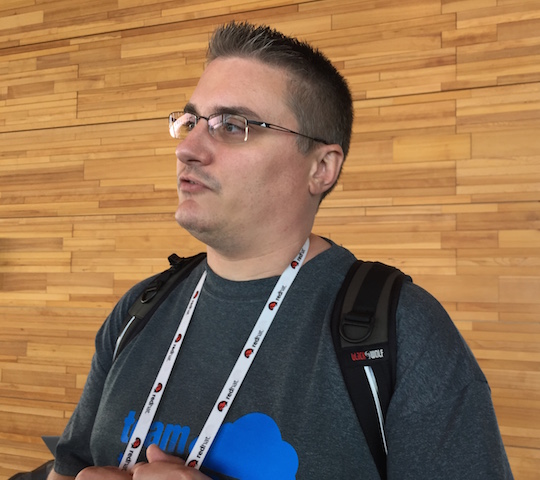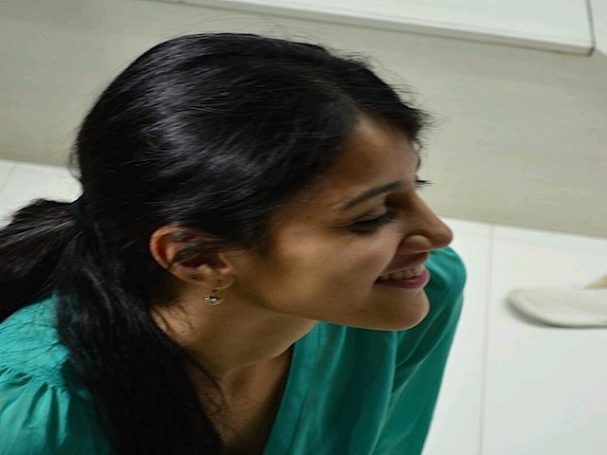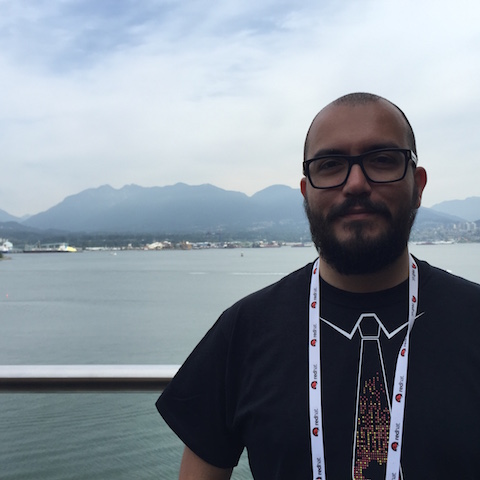An OpenStack community some 6,000 people strong gathered in Vancouver this week for the Summit. It’s impossible to sound out everyone, but here’s a sample of voices…
How did the Summit go for you?

_Giuseppe Andronico, technical researcher, Italy’s National Institute for Nuclear Physics (INFN)_
We’ve been coming to the Summits since Hong Kong, but this Summit was very interesting because there were several developments that are potentially very useful for us. We’re working on developing a cloud infrastructure for our research. Right now, we’re working on two main fronts. One, we need a multi-region cloud because we operate throughout Italy and these clouds need to be managed together.
And we also need to develop the concept of federation, because we cooperate with a lot of other institutions around the world. So we need a federation with other clouds to share resources and data.
We’re working hard on this and hope to have support from the Foundation and other users for best practices in setting up our clouds…We also hope to see what others are doing so we can gain new perspectives on our infrastructure.
What was your favorite talk?
Matt Joyce, Big Switch
I really liked Andy Smith’s session “Openstack Is Doomed And It Is Your Fault.” He’s one of the guys who helped start the project, he and Vish Ishaya wrote the code base for Nova…He’s basically saying that it’s been five years, it’s time to do a refresh. I think he’s probably correct. It’s an opportunity for the community to think about how to rewrite some of the stuff that’s been written. It’s a good thing to look in a mirror and say hey, “Here are our flaws, how can we re-approach solving them?”
There’s an emergence of containers, there’s an emergence of software-defined network stuff and a bunch of technologies that have been the result of this drive and that have given us the chance to reevaluate how we might reengineer this stuff going forward. The next few years will see a few people go a little quiet but some very cool stuff is going to come out of it.
What’s your biggest takeaway from the Summit?
Pranav Salunke, Suse Linux
I like the way Ceilometer is going to be revamped. The current design has inherent flaws – reporting takes more juice from the cluster than actual workloads. I’m pleased about that. The blueprint sessions in the Design Summit were also useful…
What’s unique about this Summit for you?

Michael Still, senior software development manager at Rackspace and former project team lead (PTL) of Nova.
Over time, the Nova team is better at reaching consensus than we used to be…Now we tend to have better thought through, more respectful conversations. That’s a sign of maturity.
The Nova Ops feedback session was really interesting — because I didn’t really have anything to complain about! There was a little fiddly bit on the edge that’s kind of bothering us, but it turns out that Nova’s not that bad to run anymore. It’s been cool to get out of this firefighting mode and start talking about how to make things better.
Why did the conflict die down?
We talk more. We have specs, for example, and we can have concrete discussions with feedback from users and operators. Previously, we’d walk into a session cold and it’d be like, ‘let’s do this from first principles.’
We set required reading for sessions now. We’ve gotten better at communicating, despite the fact that the team has grown.
What was your favorite session?

Sayali Lunkad, consultant, and core reviewer OpenStack training guides
I attended a couple of Neutron sessions that were very good. One in particular was “Neutron L2 and L3 agents: How They Work and How Kilo Improves Them,” it covered all the differences and gave a great idea about the new features, how they work and what work still needs to be done, in case you want to get involved. It was a really nice session.
How many Summits have you attended?
Edgar Magana, cloud operations architect, Workday

I’ve been to the last nine! My first one was the Santa Clara Summit, 2011.
What’s the biggest change you’ve seen?
Well, they used to be much more personal. It was so unique the way we came together in the Design Summits, discussing what we wanted to see. We all knew each other very well.
On the conference side, wow! How many different ways there are to do things is just amazing. You have somebody who uses a certain operating system with certain networking technology tools and a certain use case — and the number of use cases that you can provide with OpenStack is just amazing.
I believe the most important part of OpenStack is the ecosystem that ’s been created around it. Five years on, you really see the growth — and not just because there are vendors who want to sell stuff.
How do you get the most out of a Summit?
The last two or three Summits, I’ve noticed that it’s been too much. I wanted to attend everything but I can’t! For every session I wanted to attend, there were another three that I missed.
This time, I sat down with my five-person team to decide beforehand what we would cover, it was all about ‘divide and conquer!’ You can always watch the videos later, but the experience of being in the room is unique, that’s why you come.
What would you change?
It’s hard to extend the conference over more days – people get tired – but maybe focus more on the conference and the expo. My colleagues on the dev environment side will kill me for saying this: but maybe we should evolve and like the Ubuntu community did virtualize more of that? Although, right now I’m looking at this table of Neutron developers sitting together — and that’s probably priceless.
- OpenStack Homebrew Club: Meet the sausage cloud - July 31, 2019
- Building a virtuous circle with open infrastructure: Inclusive, global, adaptable - July 30, 2019
- Using Istio’s Mixer for network request caching: What’s next - July 22, 2019

)







